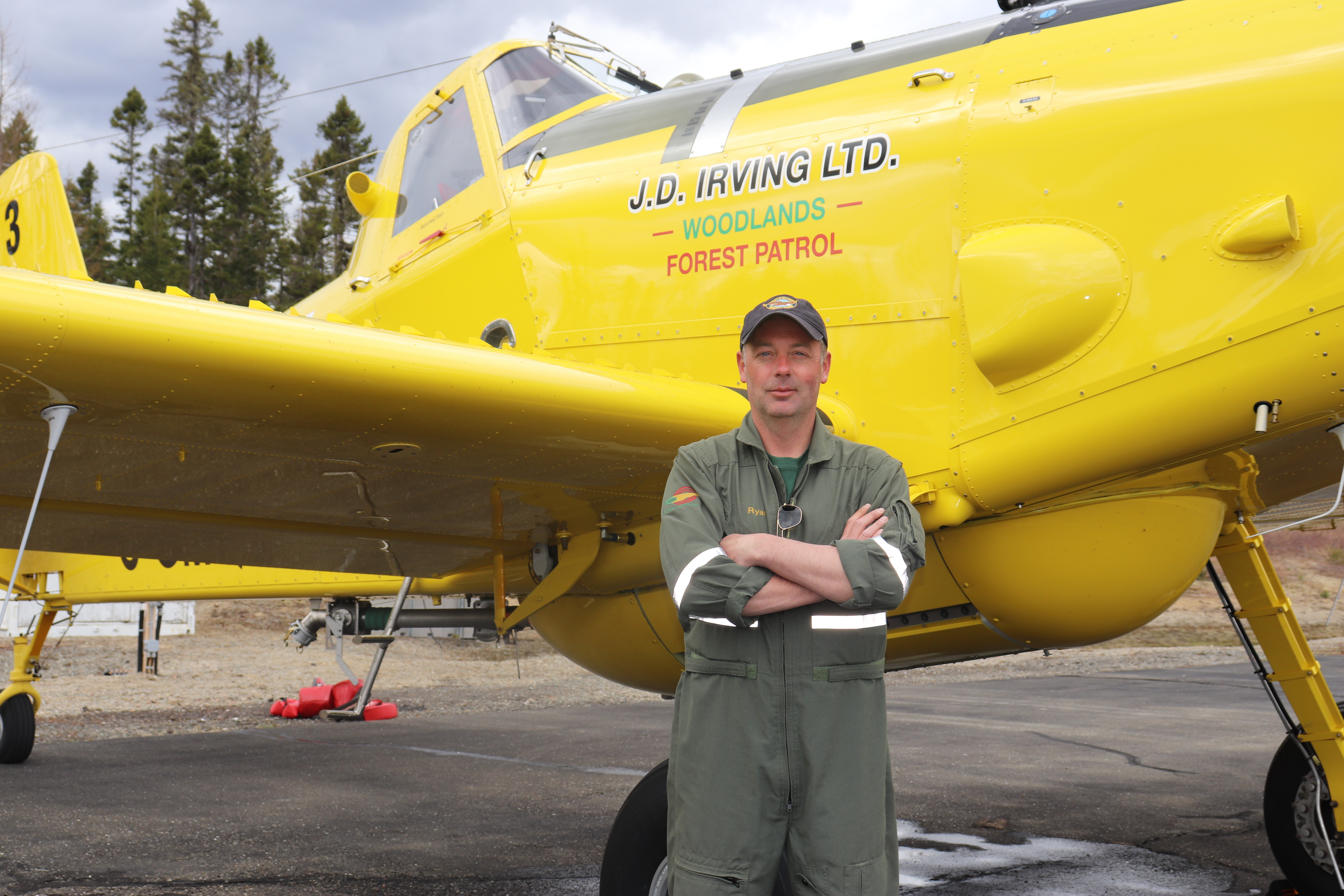Wildfire and the Working Forest Part 3: Response
J.D. Irving, Limited manages 2.4 million hectares (5.9 million acres) of forest in New Brunswick, Nova Scotia and Maine. Minimizing the impacts of wildfires on the working forest and surrounding communities is an important facet of the company’s approach to sustainable forest management.
This is the third in a three-part series about wildfires and the working forest. Part 3 focuses on the response in the event of a fire, system of readiness, early detection and a quick response time.
During forest fire season in New Brunswick, the working forest is protected in part by Forest Patrol Ltd., J.D. Irving, Limited’s aerial firefighting unit.
Made up of four, fixed wing SEAT (single engine air-tanker) planes – Air Tractor AT-802s – a Kodiak 100 bird-dog plane; two Bell 407 helicopters; seven airplane pilots; three helicopter pilots and six private air strips, the monitoring, detection and early fire suppression system protects the working forest and is often called by government and other landowners to help respond to fires.
From the end of April to the start of October, the pilots operate mainly out of Forest Patrol’s main air base in Juniper, NB.
Ryan Peck is one of them. A duty officer, lead pilot, training pilot and line pilot all in one, this is Peck’s ninth season with Forest Patrol, though he’s been a pilot for 22 years. Peck comes from a long line of pilots, starting with his grandfather who served with the air force during World War II as a tail gunner, and passed down his newfound love of aviation to his sons who passed it on to their sons.

For Peck, it was the excitement of the career and the adrenaline rush that drew him to this type of job.
“You’re there with a target (fire) and you’re trying to hit it,” Peck said. “You’re trying to save infrastructure and even save lives.”
On a sunny day in early May, the camp in Juniper is on high alert based on the fire weather index, which indicates the level of fire risk on a particular day in consideration of weather, wind, temperature, humidity level and the amount of dry vegetation available to burn.
On days of high and extreme alert, the pilots are on standby. When a call comes in, the crew can be ready to launch in 15 minutes.
Each of the four Air Tractor AT-802s – new aircraft purchased in 2023 – are capable of flying 150 knots or 175 miles per hour, allowing them to be anywhere in the province within an hour. The aircraft can carry up to 800 gallons – more than 6,500 pounds – of water, foam or long-term fire retardant.
Forest Patrol crew adapt their response depending on the nature of the fire. Direct response involves dropping water or foam directly on the fire.
More commonly, an indirect attack using long-term fire retardant is employed. This red, clay-like substance is dropped around the perimeter of the fire. It acts like a fire break because it is difficult to burn through, giving ground crews the chance to knock down the fire.
Containment is key, said Peck.
“The biggest thing with a fire is to get on it as fast as possible and contain it before it spreads and gets out of control.”
Each week, the Forest Patrol team undertakes training exercises to make sure they’re primed to respond. The team remains especially vigilant on moderate risk days and on long weekends, when people are more likely to be careless when it comes to fire prevention.
“Most fires are started by people, whether it be campfires, cigarette butts and machine sparks, or lightning. Even a plastic bottle with the sun hitting it can start a fire under the right conditions,” Peck said.
Everyone has a role to play in reducing the risk of fires. Prevention measures like not leaving a fire unsupervised, paying attention to fire risk notices and weather conditions, sticking to trails when in the woods and not driving ATVs over dry brush/grass can go a long way in preventing fires from starting.
If someone notices a fire has become out of control, call 911.
For more on wildfires and the working forest, check out the other stories in this series.